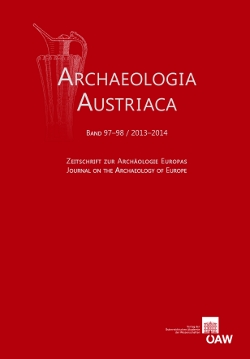
Archaeologia Austriaca 97-98/2013-2014, pp. 141-153, 2014/12/30
Zeitschrift zur Archäologie Europas
Journal on the Archaeology of Europe
Anthropological examination of the burials recovered at Gobelsburg, Lower Austria, revealed a total of seven individuals: three males, one female and three subadults. Palaeopathological investigations have shown features of periodontal disease and deficiencies of vitamin-C and iron; the latter is indicated by new bone formations (periostitis) on the long bones as well as porotic changes on the cranial vault (porotic hyperostosis). Occupation-induced musculo- skeletal stress markers (enthesopathies) are indicative of heavy physical work; the formation of a “rider’s bone” at the proximal femur points to a particular continuous activity (horseback riding). Moreover, a single traumatic incident, a supination fracture suffered by the male recovered from grave 4, implies a further particular life-historical event. Based on rarely observed (genetically fixed) features of the upper incisors and other epigenetic skeletal traits, a familial relationship between the males and the subadult individual (grave 3) can be suspected. 141 Archaeologia Austriaca, Band 97–98/2013–2014, 141–153 © 2014 by Österreichische Akademie der Wissenschaften, Wien doi: 10.1553/archaeologia97-98s141
Keywords: Gobelsburg, Austria, Migration period, age and sex determination, pathomorphology, dental and oral diseases, malnutrition symptoms, trauma, epigenetic traits, rider’s bone.